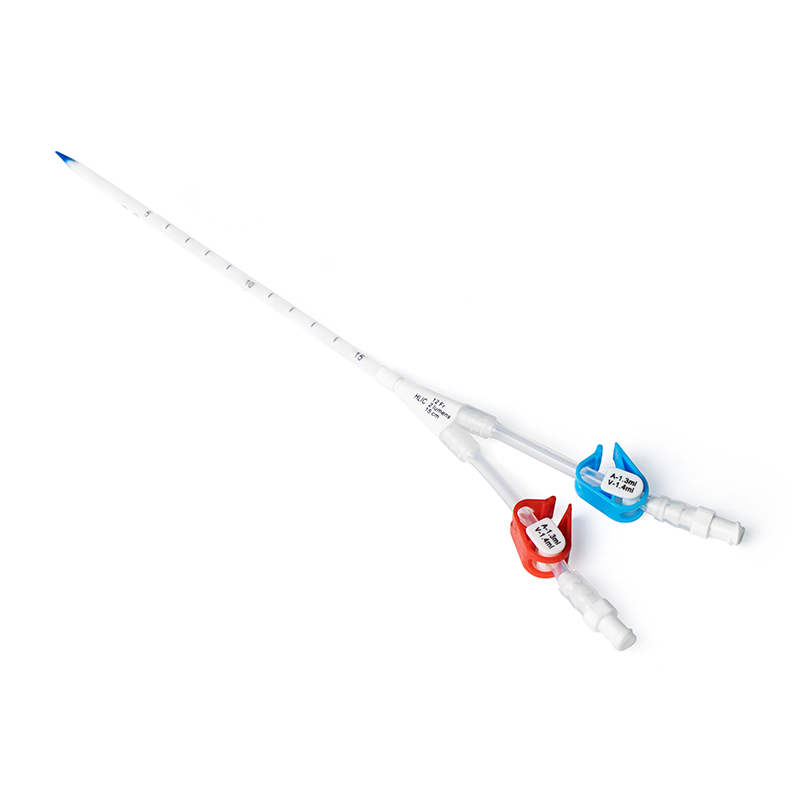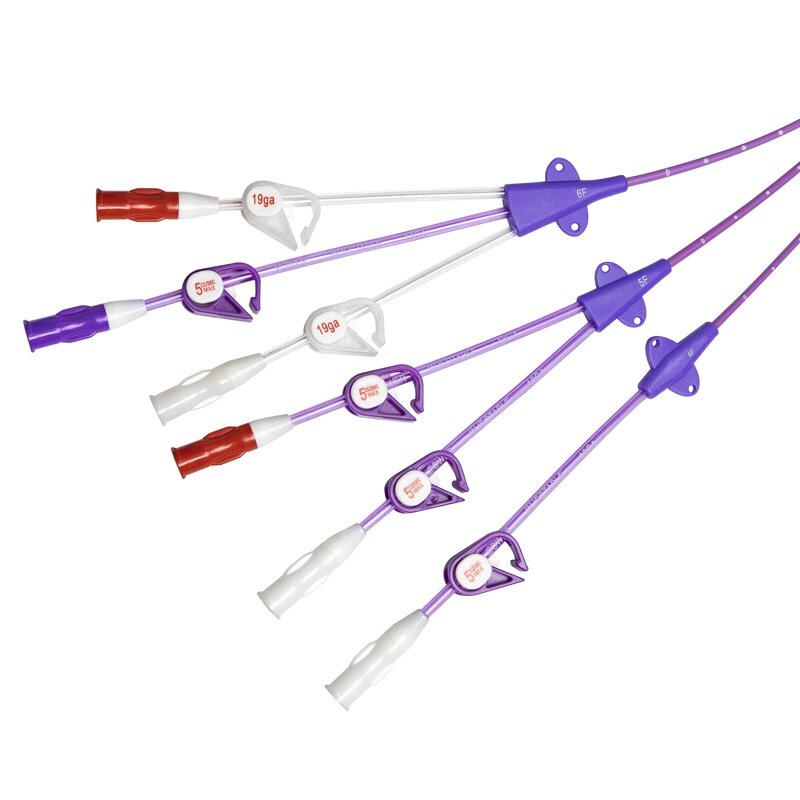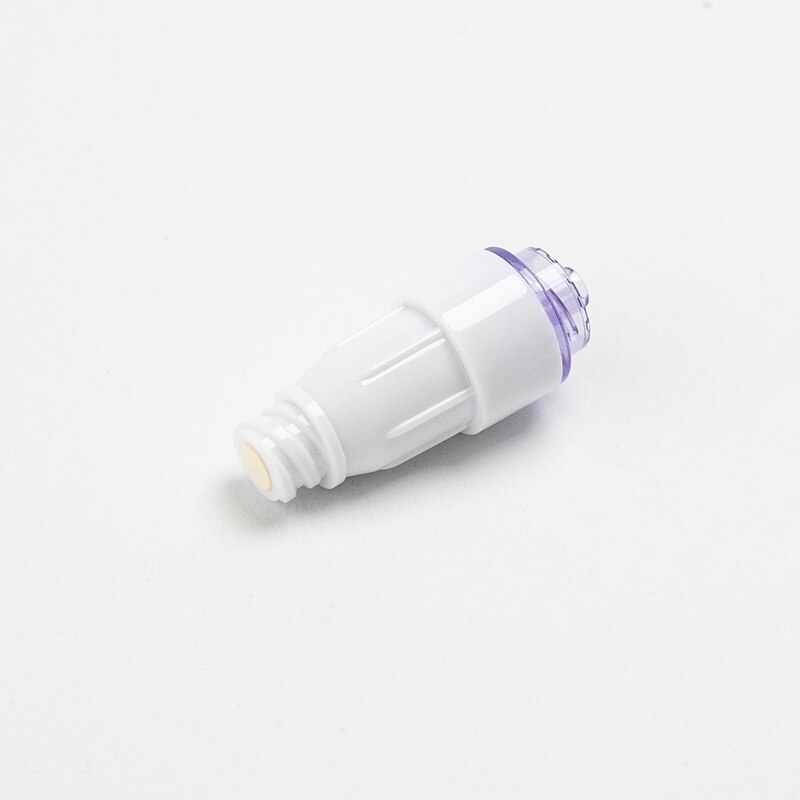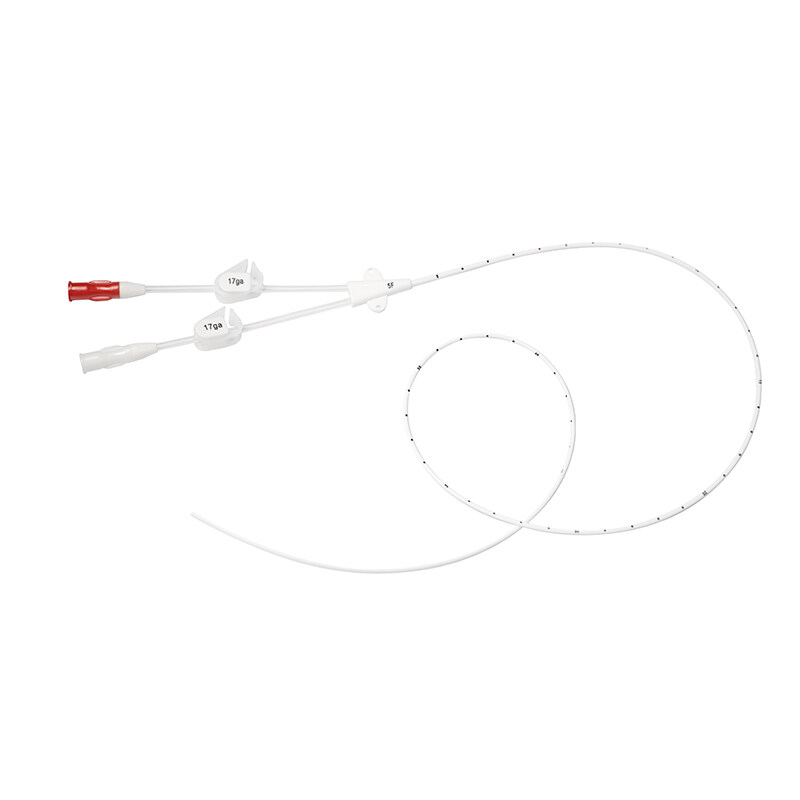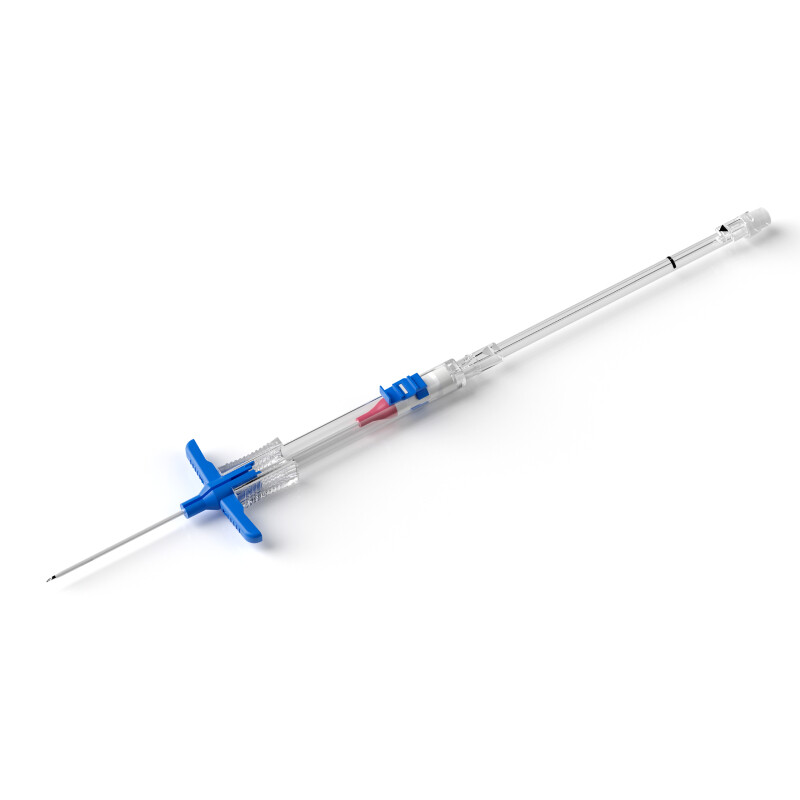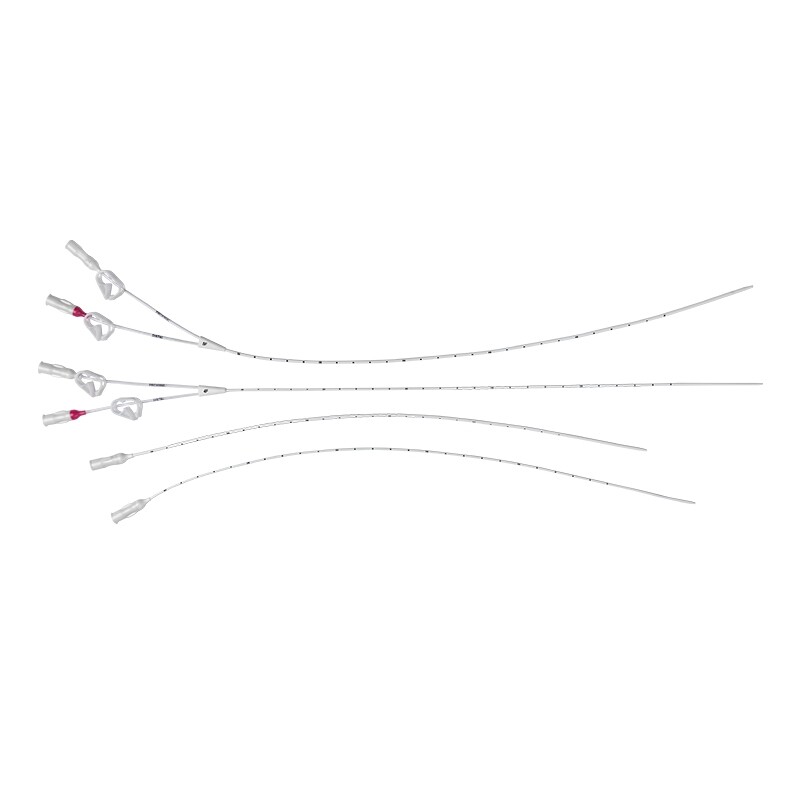Umbilical vessel catheterisation is possible until the cord separates but is most successful in the first hours of life. Access is usually under strict sterile precautions although umbilical vein catheterisation can be used for central venous access in an emergency situation. Umbilical arterial catheterisation should be considered for any baby with increasing oxygen requirements, needing accurate blood gas monitoring, regular blood sampling or when continuous blood pressure monitoring is required. Where possible parents should be informed of the need for the procedure.
- Distance markings every centimeter from 5 to 25cm.
- Flexible, thermos-sensitive material with open and rounded distal tip to reduce vascular trauma
- DEHP-free
- Polyurethane has good haemocompatibility: reduces risk of thrombosis
Indications for UVC
• Emergency venous access
• Central venous access for maintenance intravenous fluids,
hypertonic fluids/drugs, TPN, blood products
• Exchange transfusion
Indications for UAC
• Prematurity <27 weeks
• Increasing oxygen requirement over 40%
• Ventilated baby
• Regular blood sampling (senior decision)
• Invasive blood pressure monitoring
• Exchange transfusion
Contraindications
• Evidence of vascular compromise to lower limbs or buttocks
• Omphalitis
Complications
• Sepsis
• Embolisation from air or blood clot
• Extravasation
• Cardiac tamponade
• Thrombosis, which may involve:
▪ Femoral artery – lower limb ischaemia,
▪ Renal artery – hypertension, haematuria, renal failure,
▪ mesenteric artery – gut ischaemia, NEC
• Haemorrhage due to accidental disconnection

